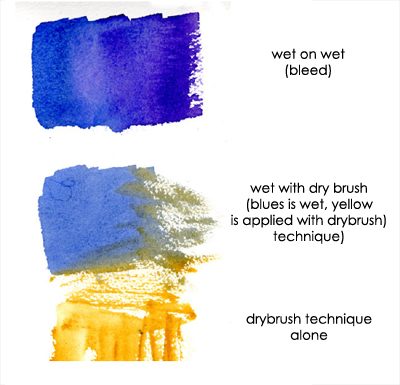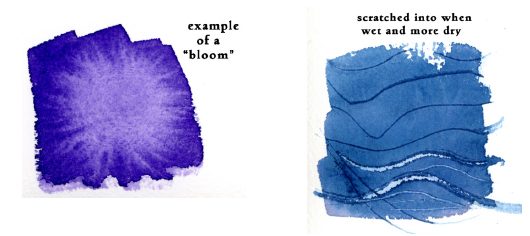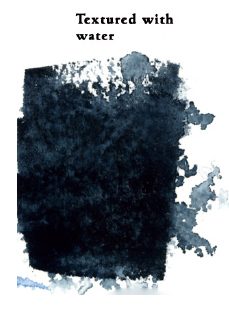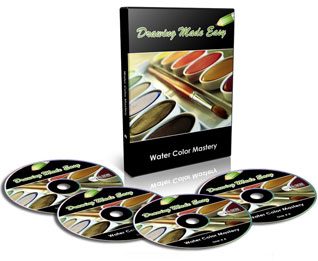In the simplest terms, there are only three ways to paint in watercolor …
- With a wet brush on a wet surface
- A dry brush on a dry surface
- Or a combination of those two, which wind up looking very close to the same.
The first technique is called “wet-on-wet,” and it results in colors that bleed into each other, for a soft, blended look.
Painting with a dry brush results in a more textured look, depending on the surface of the paper.
Combined with wet paint, the transition is more apparent than when painting wet-on-wet.
There are also a limited number of ways to create texture patterns, but these can be combined and tweaked in literally endless ways, resulting in too many variations to list.
The four main ways to create texture, however, are by scratching, spraying, stamping, and using salt.
Scratching can be done in wet or dry paint to different effect. In wet paint, the scratch line becomes a darker shade; in more dry conditions, it lifts out a highlight.
Spraying with water (try other fluids as well, such as rubbing alcohol) will make different textures depending on how wet the paint is.
In very wet paint, a drop of water creates a “bloom” affect. If the paint is a bit more dry, it will follow the pattern of the water to create an interesting feathery edge or a texture like snow.
Salt can be tricky to work with. Too wet a surface and the salt washes away before it can make a pattern. Too dry, and it either falls off or sticks in the paint and becomes very hard to remove.
Done properly, salt makes a snowy texture very similar to what you can achieve with spraying, and when the surface is completely dry, you can remove it by rubbing gently.
Patterns can be stamped in the paint with very nearly anything. Some commonly used items are wadded pieces of paper towel, cellophane, fingertips, leaves, or other pieces of paper.
You can also stipple a design using a rough-bristled brush over a dry surface, or experiment with other brushes that are available on the market today.
Fan brushes can be used to good effect to make woven textures and grasses, and there are brushes cut into all kinds of edges and shapes. Truly, the possibilities are endless.
With these simple step by step watercolor drawing lessons … you’ll be able to master water color paintings in record time. This is regardless of your previous experience.
With high definition videos and detailed PDF material on watercolor, you will have all the information you need to bring your watercolor paintings to life.

